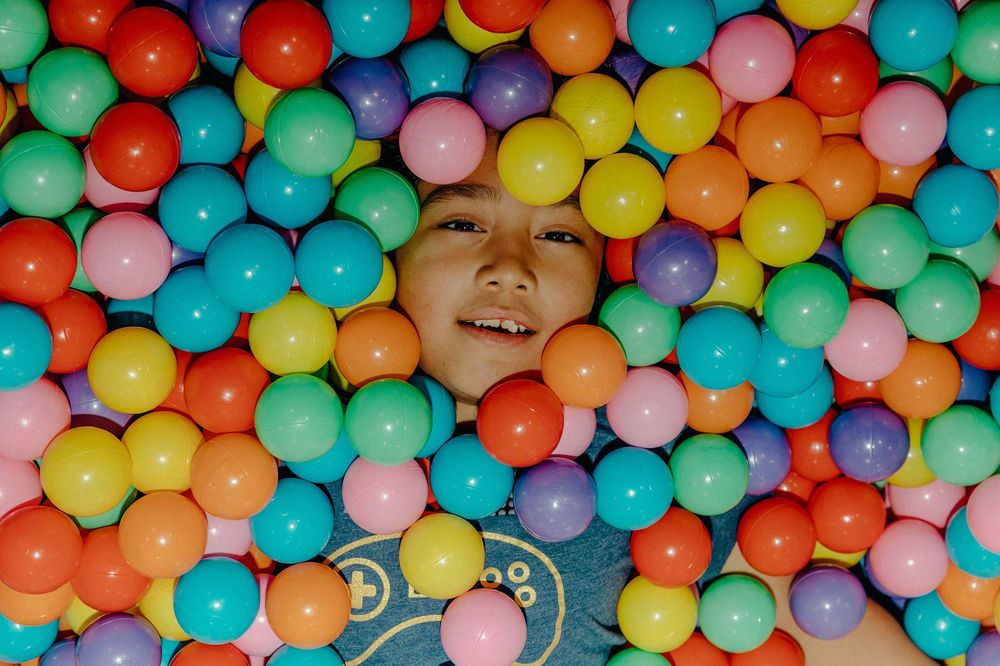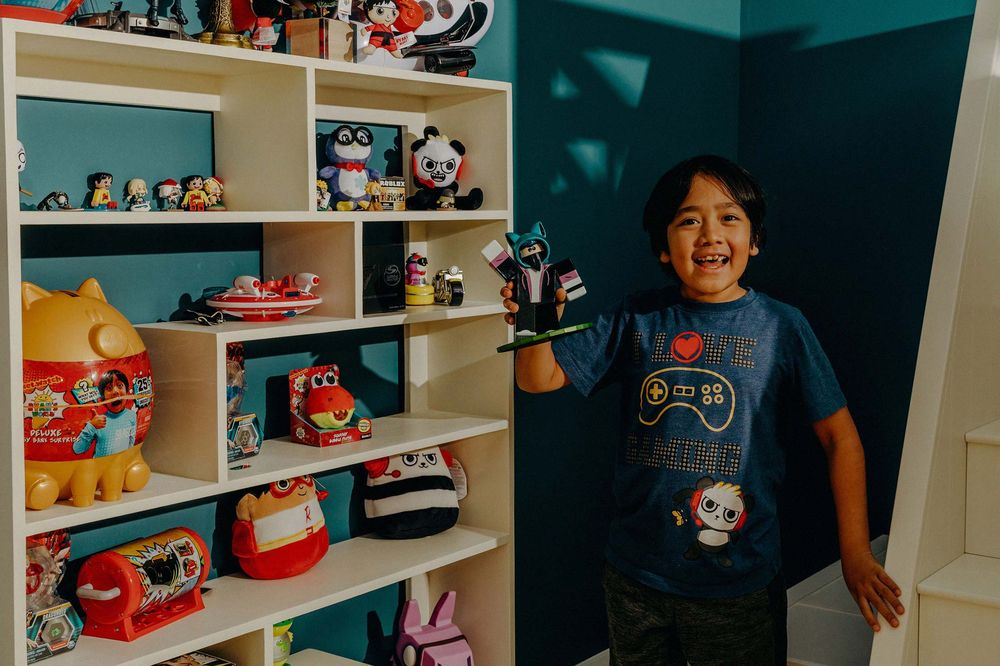
Source: Bloomberg Businessweek
Ryan Kaji is one of the most popular YouTube creators in the world, with a main channel that’s drawn 29 million subscribers interested in watching the 9-year-old open new toys, exercise, or do crafting projects. For Ryan and his family, that audience has translated into millions of dollars in annual ad revenue, the traditional form of income for YouTube celebrities.
Shion and Loann Kaji, Ryan’s parents, have also struck sponsorship and merchandising deals with Walmart and Target and signed on for TV shows with Nickelodeon and Amazon. This year, the Kajis are adding a footwear line with Skechers USA Inc. In total, products bearing Ryan’s World branding generated more than $250 million in sales in 2020, according to Chris Williams, whose company PocketWatch Inc. handles the family’s licensing business outside YouTube. The Kajis’ share of those sales represented from 60% to 70% of the $30 million of their annual revenue—making it the first year their licensing business has surpassed their YouTube ad revenue.
For three years running, Ryan has made more than any other YouTuber, according to estimates from Forbes. The Kajis’ operation, which consists of eight separate channels and the corresponding merchandising business, is serving as a model for others, showing that the most successful YouTube operations see ad revenue as a diminishing proportion of their overall business.
The YouTube influencer merchandising boom has been growing for several years. Early pioneers included Michelle Phan’s Ipsy makeup service and PewDiePie’s catalog of hoodies, hats, and yo-yos. In just the past few months, video blogger Emma Chamberlain created a cold-brew company, Chamberlain Coffee, and stunt artist MrBeast started a hamburger pop-up, BeastBurger, that’s “the most important restaurant chain in the U.S.,” according to one trade magazine. Influencer Logan Paul recently said his Maverick clothing line brought in $30 million in its first year.

Source: Bloomberg Businessweek
Ryan first appeared on YouTube at age 3 in informal home videos where he unboxed and reviewed toys. Thanks to his onscreen charisma and the inexplicable logic of YouTube, those videos amassed billions of views. Toy unboxing clips, which got their start partly with Ryan, became their own genre on the site.
Ryan’s programming has followed YouTube’s shifting trends and his own interests as he ages. “Whenever I was much younger, I liked to play with toys, so we’d do lots of toy videos,” the boy says. But now, “I like to do gaming videos, science, arts and crafts, exercising.” To ensure their son didn’t have to adopt YouTube as a full-time job, Ryan’s parents created a host of characters around him, turning a channel originally called Ryan’s ToysReview into Ryan’s World. Now the slate of animated characters includes Combo Panda and Gus the Gummy Gator—both with more than 1 million of their own subscribers. On his main channel, people watch almost 1 million hours of video each day, according to analytics company Tubular Labs.
In 2017, the Kajis signed on with PocketWatch, Williams’s newly created media company. They agreed to make PocketWatch their long-term exclusive partner for Ryan’s videos—as well as Combo Panda’s and Gus’s—and took an equity stake in the company. PocketWatch’s other investors include United Talent Agency, ViacomCBS Inc., and Robert Downey Jr.
Williams, a veteran of early YouTube network Maker Studios, put together a franchise plan to turn Ryan’s World into a kids’ licensing giant like Frozen or SpongeBob Squarepants, the latter of which at one point made more than $8 billion a year for Nickelodeon. He reached out to dozens of potential licensing partners and retailers. At that time, YouTube channels had no track record at selling toys or clothing, and most companies were reluctant to sign on.
Walmart Inc. was willing to take a chance on Ryan. As his team rolled out its first products that summer, he had his first meet-and-greet with fans at a store in Bentonville, Ark., to introduce a new line of branded toys. The family did little promotion for the event and didn’t expect many people to show up. Instead, Ryan was swamped with what his father estimated were “probably thousands” of young viewers. Footage from the appearance shows him waving to fans from inside a grocery cart, pushed down the aisles by his parents and security guards. “As parents, we were a little bit nervous,” Shion says. “We thought it was too much for Ryan to take.”
The family hasn’t held an in-store promotion since, but the branded toys took off. The Kajis and PocketWatch have now licensed their characters to more than 100 different partners.
It hasn’t been an entirely smooth ride. In 2019 the Kajis’ main channel was the subject of a complaint by the group Truth in Advertising to the Federal Trade Commission for allegedly failing to disclose promotional content. “Such deceptive ad campaigns are rampant on Ryan ToysReview and are deceiving millions of young children on a daily basis,” the group contended. The family declined to comment on the complaint, and the FTC didn’t respond to a request for comment.
Legal issues are increasingly common for YouTubers, particularly those marketing to children. Kids’ programming accounts for more than half of the 20 most-watched YouTube channels in the U.S., according to Tubular Labs. There are 6-year-olds on the platform who draw larger daily audiences than Tucker Carlson. Advertisements targeted at kids also tend to be more profitable. But at the start of 2020, following a settlement with the government over issues related to privacy, YouTube agreed to pay a $170 million fine and banned targeted advertisements in videos for children. Immediately after the change, the Kaji family, like many other YouTube stars, saw ad sales drop more than 50%.
In general, YouTube is pleased when its stars branch into commerce. The company has rolled out a series of tools for creators to sell items and paid memberships on its site, and it plans an even bigger online shopping push this year.
Plenty of other YouTube creators are aiming to follow the Kajis’ example, diversifying into toy lines and other merchandise. Cocomelon, the most-watched channel on all of YouTube, launched a line of toys in September and has licensed episodes to Netflix Inc., which quickly ranked among the streaming service’s 10 most popular shows in the U.S. And Love Diana, another property in the PocketWatch stable, has lined up close to 50 licensees in just a few months. Dolls depicting Diana as a pop star, doctor, and mermaid are already on sale at Target.
“We’ve created a whole new category,” Williams says. “Before Ryan’s World, there was no category of global kids’ franchises around YouTube intellectual property.” Soon, they may be unavoidable.
Source: Bloomberg Businessweek Lucas Shaw & Mark Bergen | March 22, 2021